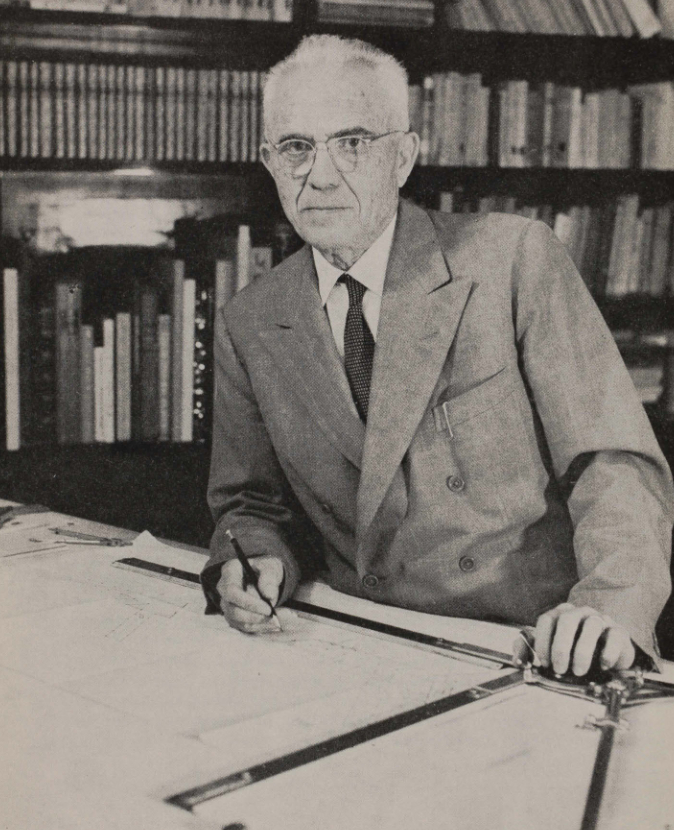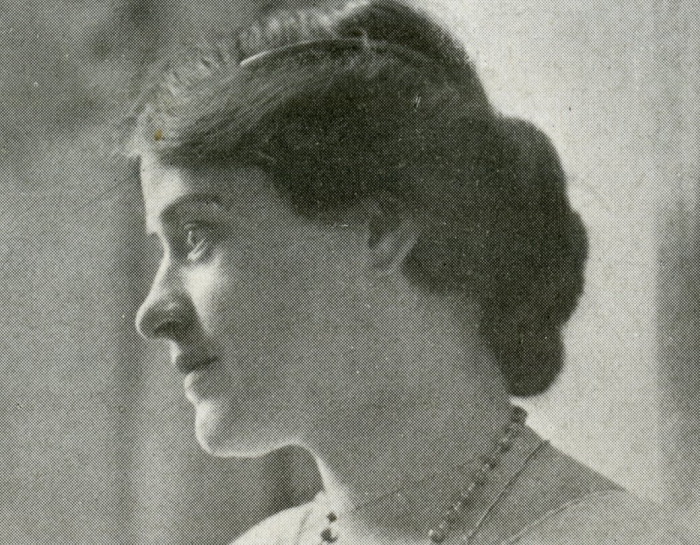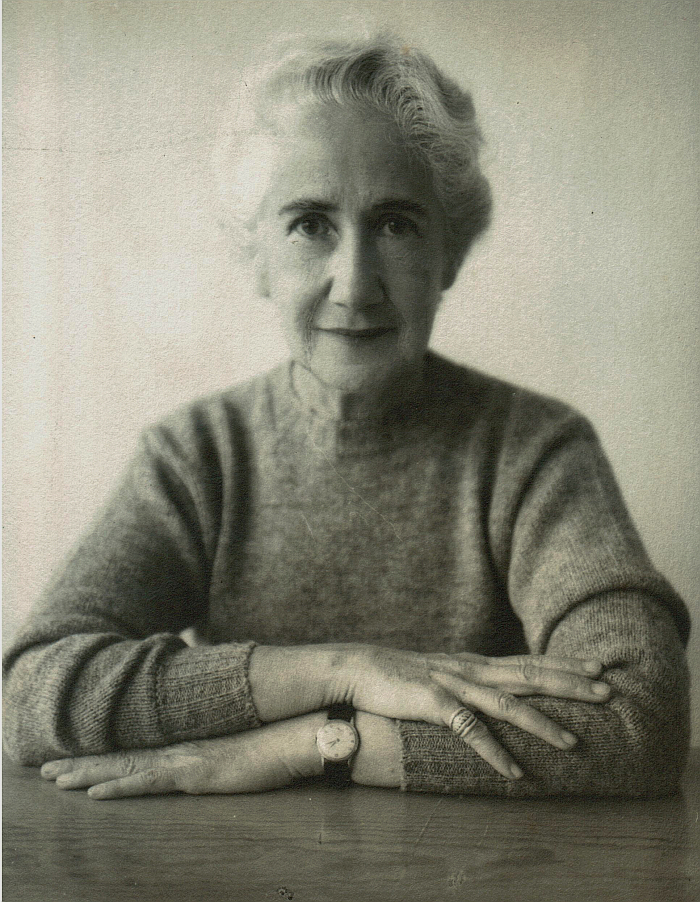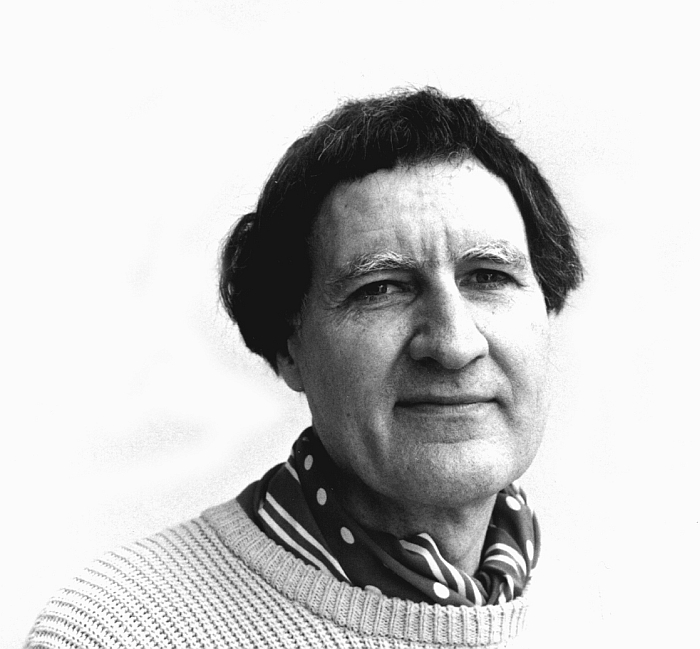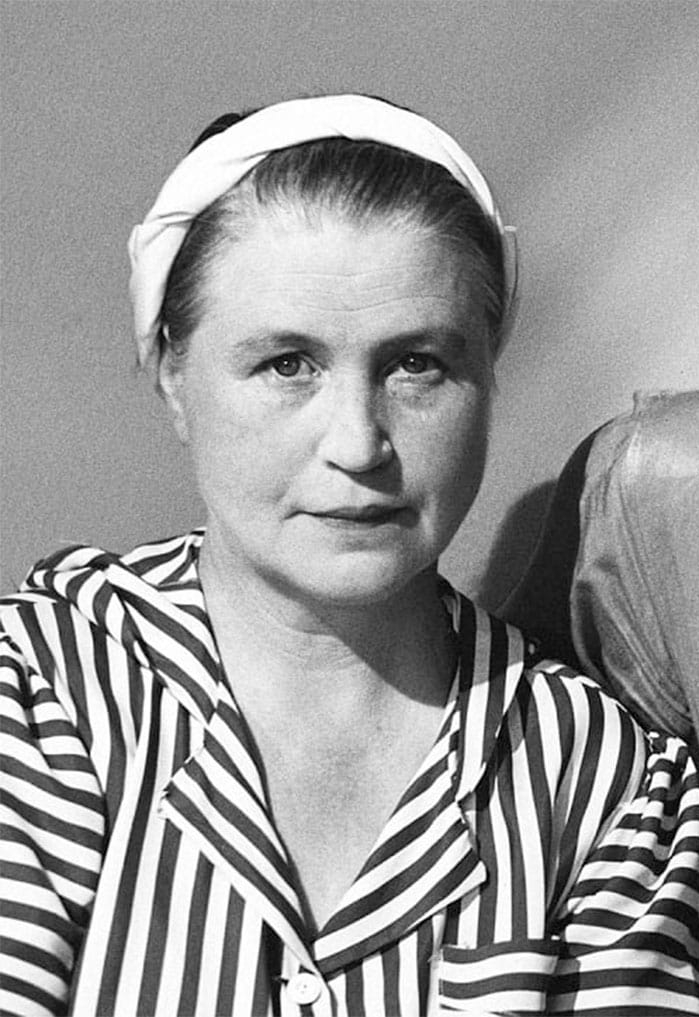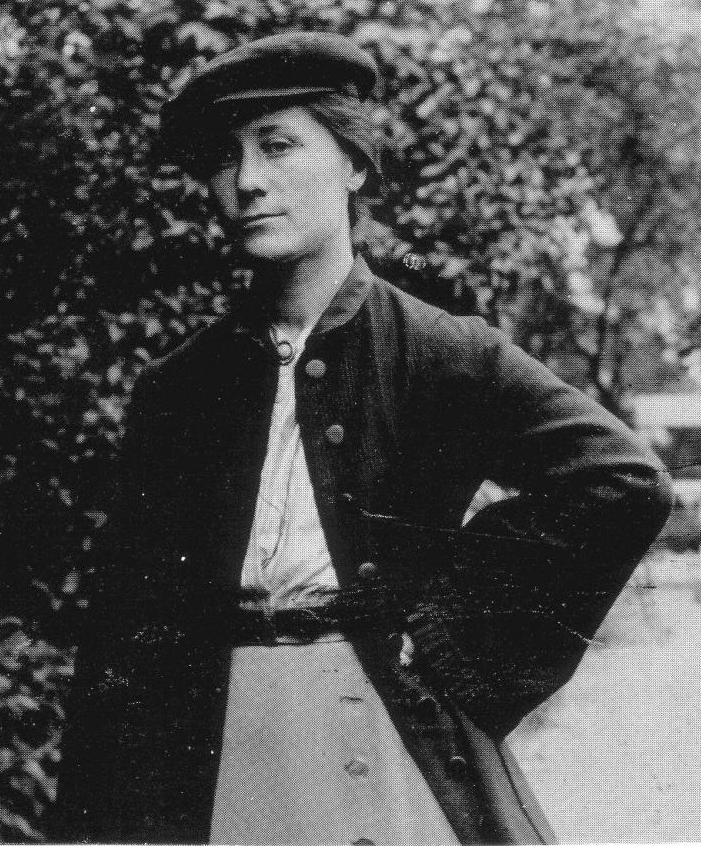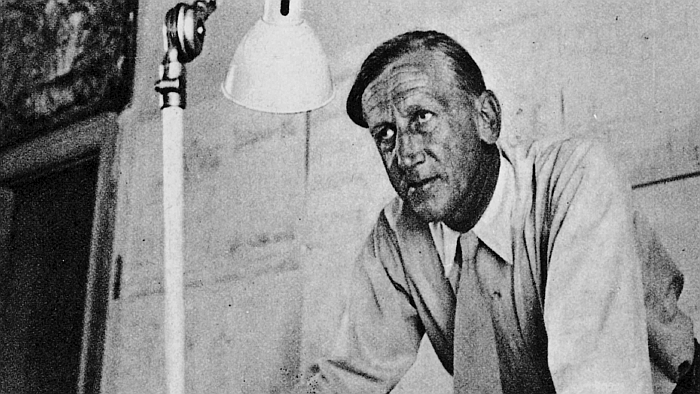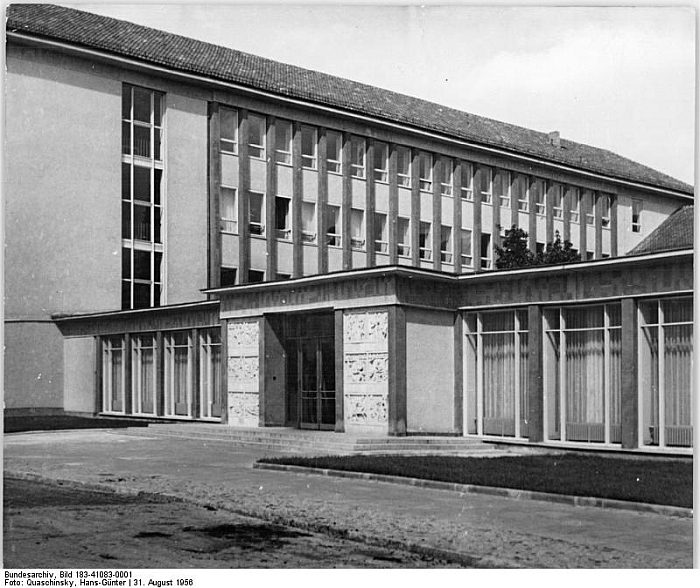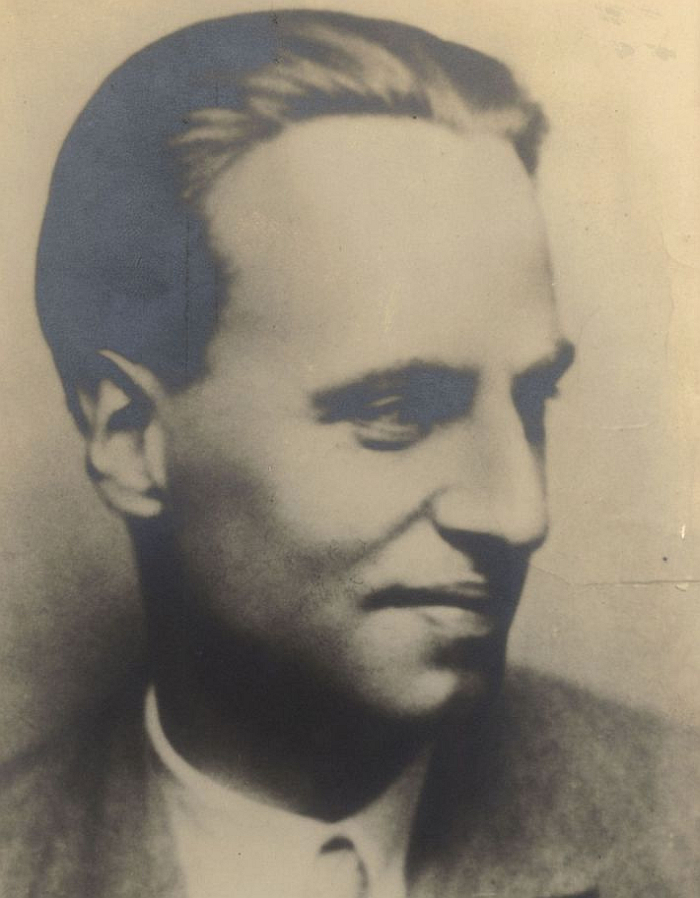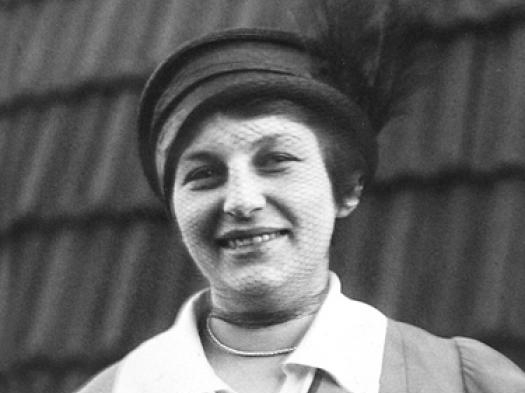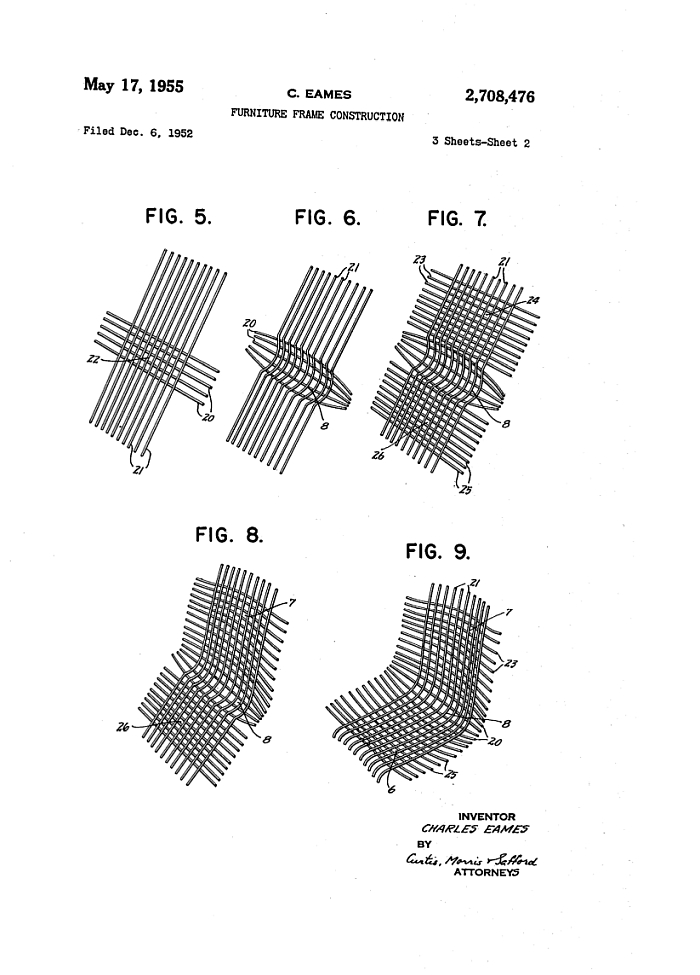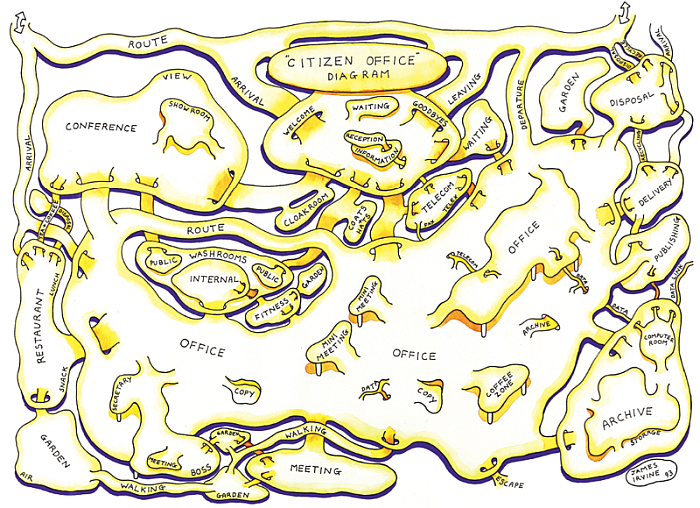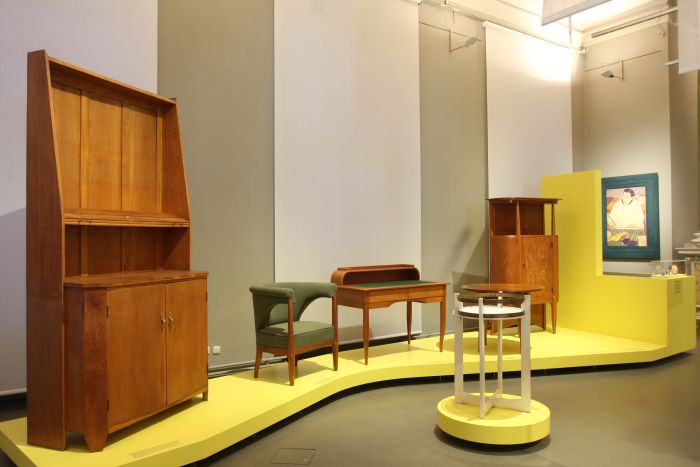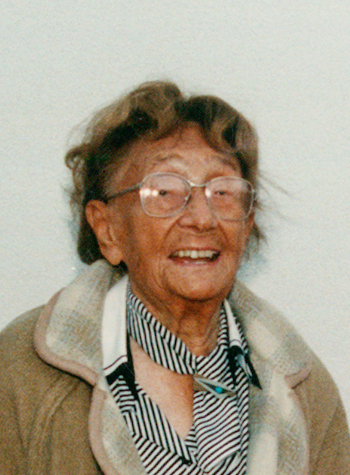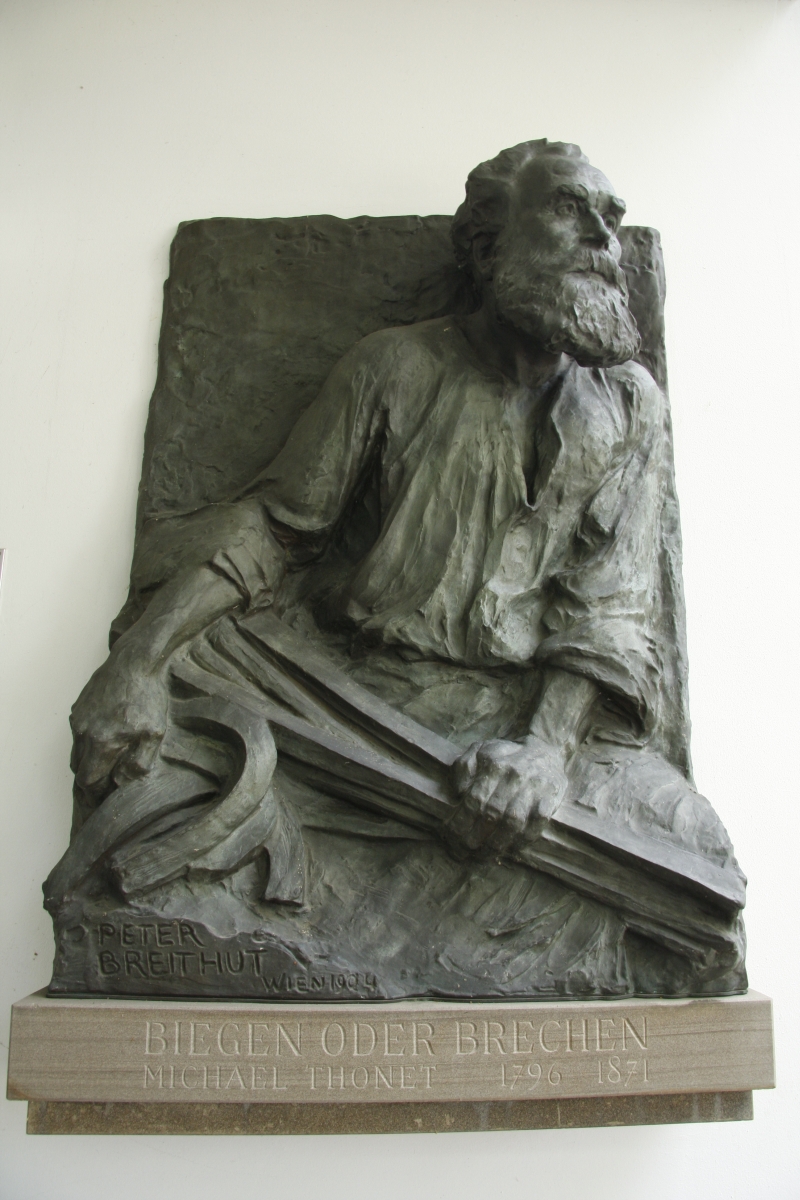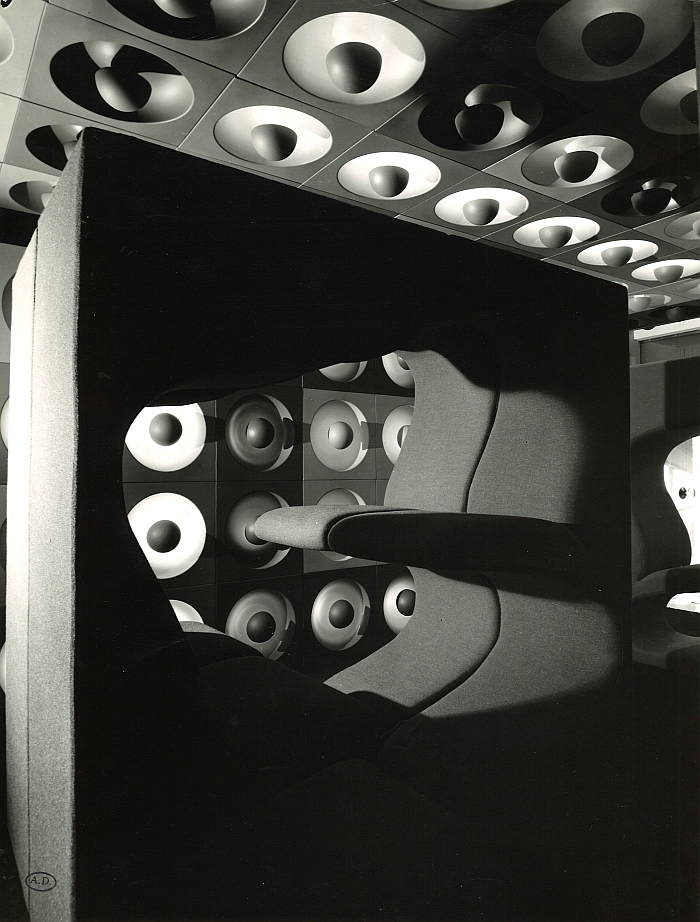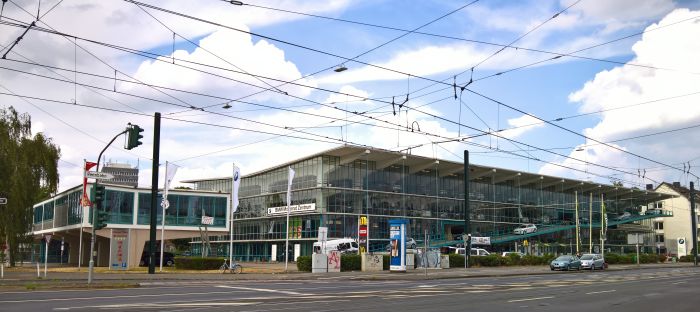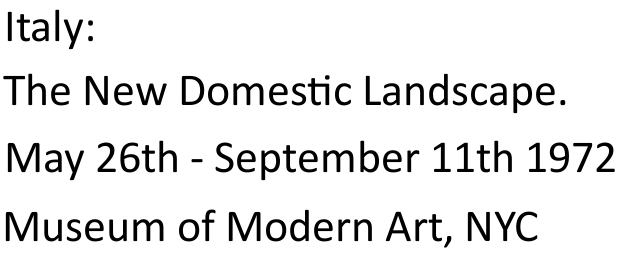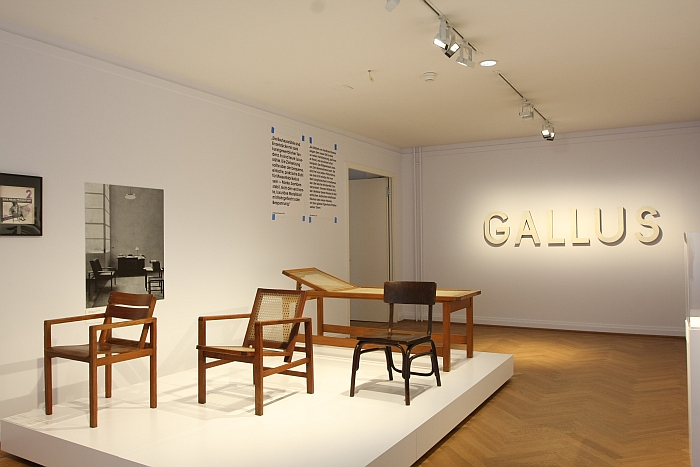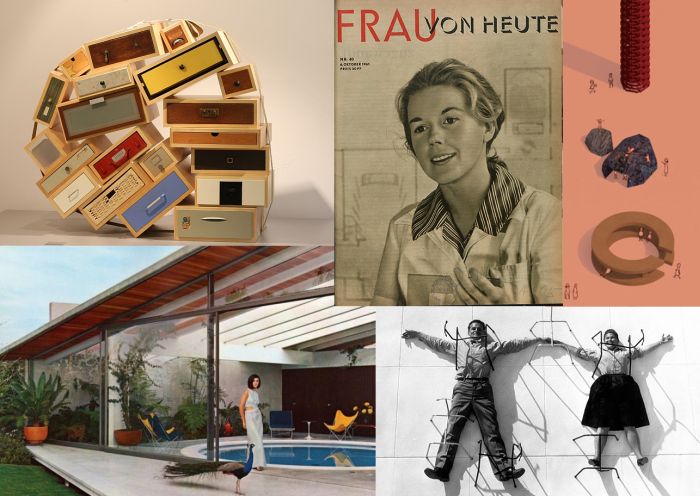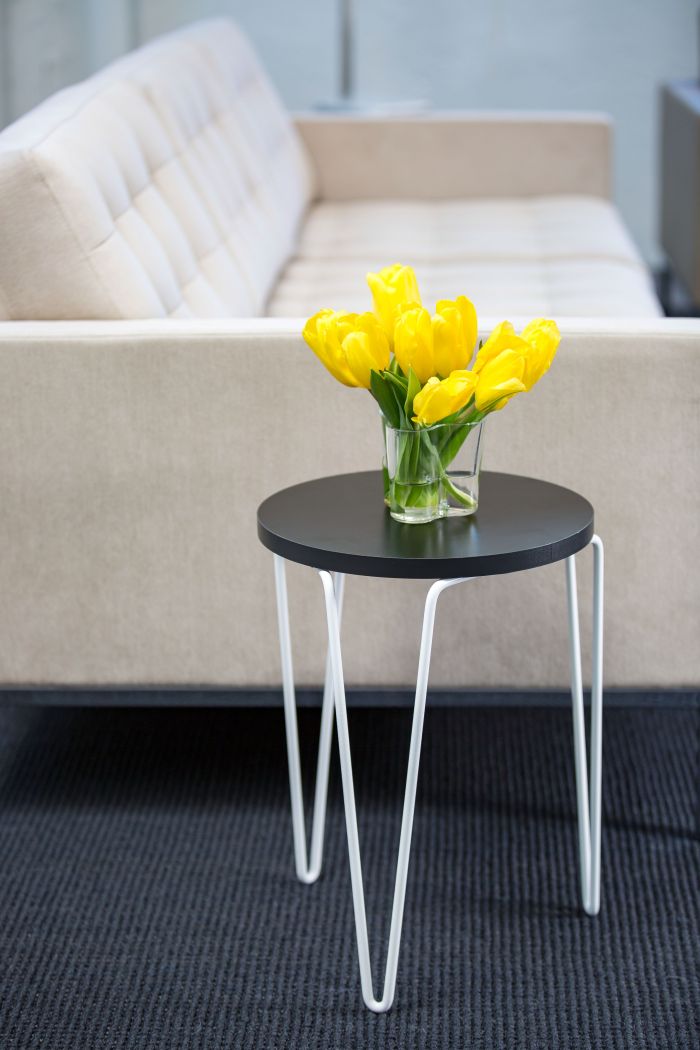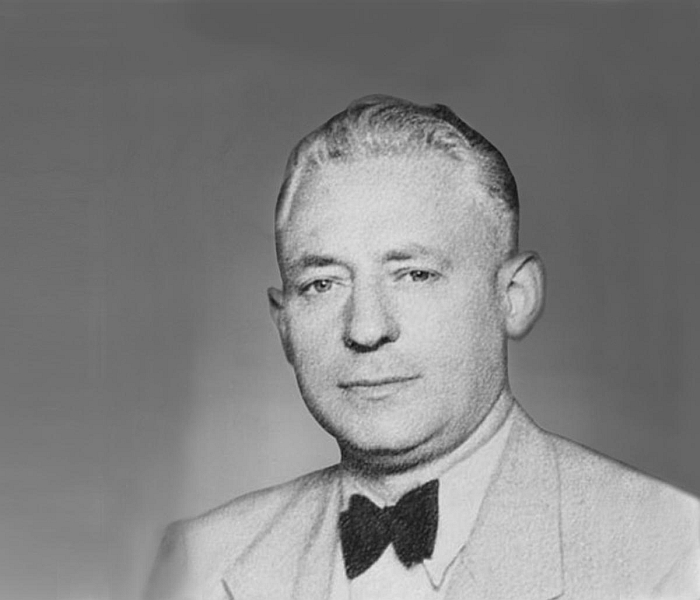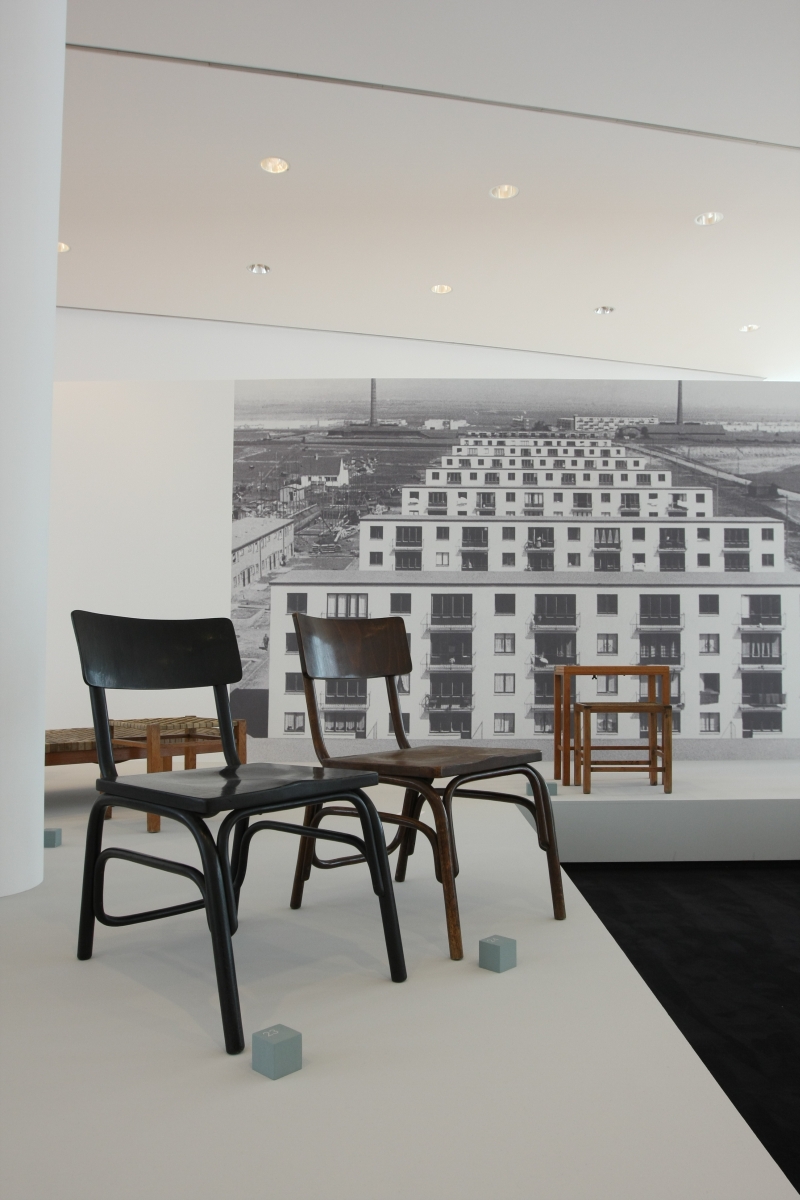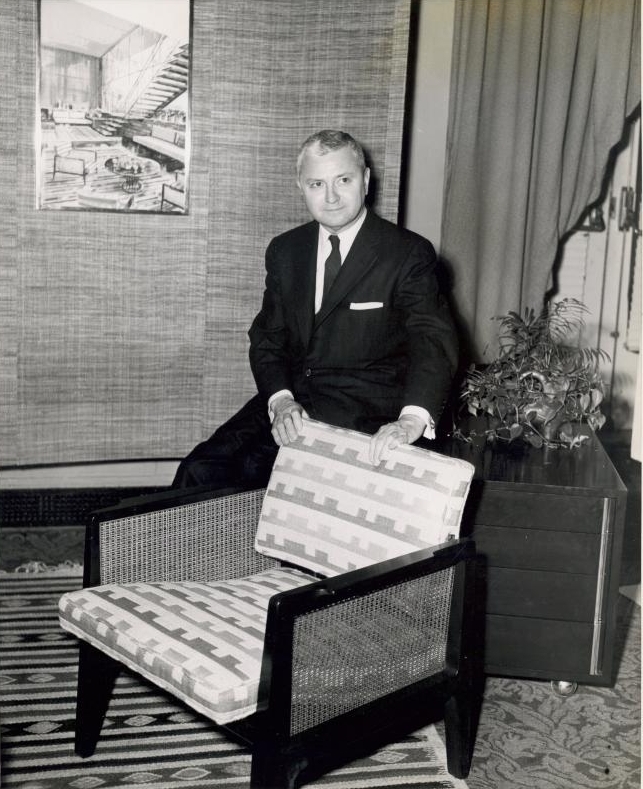Category: Design Calendar
smow Blog Design Calendar: June 21st 1891 – Happy Birthday Pier Luigi Nervi!
“Reinforced concrete is the best constructional material yet devised by mankind”, enthused the Italian civil engineer Pier Luigi Nervi in 1956.1
A position Nervi spent a circa sixty year career arguing for, both in innumerable texts and through a canon of varied, and varyingly challenging, constructions throughout Italy, and much further afield. And in doing so Pier Luigi Nervi not only helped advance a popular acceptance of reinforced concrete as a construction material, but also helped develop an argument that in context of our built environment how we construct is, in many regards, more important than what we construct. An argument that has lost none of its contemporaneous since Pier Luigi Nervi first advanced it…….
smow Blog Design Calendar: January 10th 1875 – Happy Birthday Louise Brigham!
“Boxing is not an exclusively athletic term in these practical and utilitarian days”, noted John Crocker in 1913, rather, “the making of useful and ornamental things for the home, from the boxes, that in other days adorned the rear of stores, is the nucleus of armament that has made “boxing” a pursuit that contains both amusement and substantial results.”1
And nobody contributed more to promoting and advancing the amusement and substantial results of the practical and utilitarian craft of domestic boxing than Louise Brigham.
A contribution that for all it may have been little recognised in recent decades remains as informative and instructive in the early 21st century as it was in the early 20th century…….
smow Blog Design Calendar: May 25th 1895 – Happy Birthday Clara Porset!
“¿Qué es diseño?” asked Clara Porset in 1949. What is design?1
Not because she didn’t know. Far from it. Over the course of the preceding two decades Clara Porset had ably demonstrated her considered, critical and responsive understandings of design; understandings that saw her develop into one of the most important, interesting and informative furniture designers in Mexico, understandings that saw her develop into one of the more important, interesting and informative protagonists in the development of industrial design in Mexico.
Before she slipped from view and into the (relative) anonymity she finds herself today.
Before the more pertinent question became, ¿quién es Clara Porset?
smow Blog Design Calendar: March 12th 1925 – Happy Birthday Lucius Burckhardt!
“Design ist unsichtbar“, Design is invisible/unseen proclaimed the Swiss sociologist Lucius Burckhardt in 1981.1
Which surprised a great many in 1981.
And may surprise a great many in 2021……
smow Blog Design Calendar: January 25th 1894 – Happy Birthday Aino Aalto!
In 1936 Aino Aalto opined that “homes can be given interior design in other ways than before – not by buying expensive complete suites of furniture, but by concentrating on low-cost furnishings which can be used – with the aid of flowers, carpets, drapery and colours – to create hitherto more practical and more comfortable homes.”1
A break not only with the understandings, the ways, of generations long past in terms of what constitutes appropriate furniture; but also a break with the ways of many of the functionalist modernist practitioners of the immediately preceding decade in terms of what constitutes an interior design.
And an opinion, an understanding, which underscores why Aino Aalto stands as an important moment in the (hi)story of interior and furniture design…..
smow Blog Design Calendar: December 25th 1875 – Happy Birthday Gertrud Kleinhempel!
The so-called Bielefeld Conspiracy asserts that the German city of Bielefeld doesn’t exist.
Have you ever been to Bielefeld?, it asks.
Do you know anyone who has ever been to Bielefeld?
Do you know anyone from Bielefeld?
If your answer to all three questions is no…….. how do you know Bielefeld exists?
A similar conspiracy could be built around Gertrud Kleinhempel, one of Germany’s first professional furniture designers and who for the greater part of her career was active in Bielefeld.
Or was, assuming Bielefeld exists. And assuming Gertrud Kleinhempel exists.
For have you ever seen any work by Gertrud Kleinhempel, do you know anyone who has seen any work by Gertrud Kleinhempel, have you ever seen Gertrud Kleinhempel on the helix of furniture design?
If your answer to all three questions is no……..
smow Blog Design Calendar: December 15th 1888 – Happy Birthday Kaare Klint!
“Only slowly does it dawn on people that modern furniture must be designed on the basis of practical necessities”, observed the Danish architect and designer Kaare Klint in 1930.1
How Kaare Klint understood those “practical necessities”, how he understood “modern furniture”, would not only define his career, but in many regards define the development of 20th century furniture design in Denmark.
smow Blog Design Calendar: September 22nd 1952 – Mart Stam suspended as Rector of the Hochschule für angewandte Kunst, Berlin
As a general rule we prefer to focus the Design Calendar on positive events, it just seems more, well, positive; however, sometimes a negative event is more illustrative of a situation, provides for better access to a story.
An event such as Mart Stam’s beurlauben, suspension, as Rector of the Hochschule für angewandte Kunst, Berlin, on September 22nd 1952.
The unhappy end of Mart Stam’s not altogether joyful sojourn in East Germany.
But also a moment that allows for some focussed considerations on both the person Mart Stam and on his understandings of art, architecture and design.
smow Blog Design Calendar: August 5th 1899 – Happy Birthday Mart Stam!
“Wij hebben de nieuwe wereld te scheppen” wrote a, then, 19 year old Mart Stam in 1919.1
“We have to create the new world”
And subsequently spent the following decades developing, explaining and demonstrating his understandings of what that meant……
smow Blog Design Calendar: June 16th 1885 – Happy Birthday Lilly Reich!
In a letter in 2008 to the editors of the Journal of the Society of Architectural Historians concerning remarks in an article on the staged illumination of Mies van der Rohe’s skeletal frame constructions, the architecture historian Kathleen James-Chakraborty refers to the “linking of Heinrich Tessenow’s Festspielhaus of 1910-12 in Hellerau with the installation for the glass industry that Mies designed (in collaboration with Lilly Reich, whom Petty does not mention) for the Stuttgart Werkbund exhibition in 1927.”1
“(in collaboration with Lilly Reich, whom Petty does not mention)”
(in collaboration with Lilly Reich, whom history so often does not mention, or when then fleetingly and sparingly, and which thus tends to leave Lilly Reich’s oeuvre in the shadows. Not least in the shadows of the staged illumination of Ludwig Mies van der Rohe…….)
smow Blog Design Calendar: May 17th 1955 – Charles Eames Granted US Patent 2,708,476 for Furniture Frame Construction
On May 17th 1955 Charles Eames*, as assignor to the Herman Miller Furniture Company, was granted US patent 2,708,476 for a “Furniture Frame Construction”, specifically for, “a skeleton type metal furniture frame or shell construction” formed from “a plurality of lengths of wire arranged in crossed relation with another plurality of lengths of wire and welded thereto at their intersection…”1
A patent which although important and interesting in itself, is and was in many regards just as important and interesting for developments that arose on account of it. And for what its (hi)story can teach us about the work of Charles and Ray Eames……..
smow Blog Design Calendar: April 30th 1993 – Opening of Citizen Office at the Vitra Design Museum, Weil am Rhein
With the exhibition Citizen Office the Vitra Design Museum staged not only their first conceptual, research based, exhibition, but also one of the first museal reflections on “the world of the office”.
Reflections which not only pointed towards new directions and understandings then, but which offer insights and lessons for today…….
smow Blog Design Calendar: April 14th 1874 – Happy Birthday Margarete Junge!
“The work of the Dresden artist Margarete Junge is largely shrouded in darkness” noted the art historian Gert Claußnitzer in his introduction to the 1981 exhibition “Margarete Junge. Fashion sketches and flower studies”1
And while Margarete Junge’s 2D works may have been allowed to shine, if only briefly, in the early 1980s, her 3D works remained stubbornly shrouded: only in recent years being afforded the opportunity, if only partially, to radiate as they once did.
Thankfully. For the works, and the biography, of Margarete Junge are as interesting and important as they are illuminating……
smow Blog Design Calendar: January 23rd 1897 – Happy Birthday Margarete Schütte-Lihotzky!
“The role of the architect is one of organisation. The house is the considered organisation of our ways of life”1, opined the Austrian architect Margarete Lihotzky in 1921.
And in the course of a long, varied career, she repeatedly demonstrated what she understood by such; including most famously, if somewhat narrowly, in a kitchen design………….
smow Blog Design Calendar: December 10th 1869 – Thonet Relinquish Solid Wood Bending Privilege
On December 10th 1869 Gebrüder Thonet voluntarily relinquished their 1856 Privilege in respect of “The manufacture of chairs and table legs made of bent wood, the bending facilitated by the action of steam or simmering liquids”; thereby ending not only a thirteen year monopoly during which time Thonet became a firmly established global brand, but also the culmination of a neigh on three decade story which highlights the importance of patent protection in the furniture industry.
smow Blog Design Calendar: October 24th 1969 – Opening Qu’est-ce que le design? @ Musée des Arts Décoratifs Paris
Qu’est-ce que le design?
What is design?
A question as old as the word itself, arguably older. But one with an answer?
In an attempt to approach one the Musée des Arts Décoratifs Paris asked Charles Eames, Verner Panton, Roger Tallon, Joe Colombo and Fritz Eichler, Qu’est-ce que le design?……
smow Blog Design Calendar: August 23rd 1915 – Happy Birthday Paul Schneider-Esleben!
Multi-storey car parks are many things to many people. For skateboarders a playground, for love-torn teens a place of privacy, for authors and film-makers an all too easy metaphor, and for yet others ….. somewhere to park their car.
For the German architect Paul Schneider-Esleben the multi-storey car park represents his career breakthrough. And one of his most defining projects.
smow Blog Design Calendar: May 26th 1972 – Opening of Italy: The New Domestic Landscape @ The Museum of Modern Art, New York
“This exhibition intends to acknowledge the cultural achievements of Italian design in the last decade, to honor the accomplishments of its gifted designers and incisive critics, and to illustrate the diversity of their approaches to design by presenting a collection of the most interesting examples of their work.”1
Thus announced the curators of the Museum of Modern Art’s 1972 exhibition Italy: The New Domestic Landscape their intentions.
The New Domestic Landscape portrayed by the gifted designers accomplishments and diversity of their approaches wasn’t however, necessarily, one inhabited by voluminously upholstered sofas and elegant lighting…….
smow Blog Design Calendar: October 24th 1929 – Opening of the 2nd Congrès internationaux d’architecture moderne in Frankfurt
“The problem of the construction of affordable housing for the lowest earning sections of the population is currently a primary concern in almost all civilized countries.”
Thus invited the Congrès internationaux d’architecture moderne to their second congress, a three day event which opened on Thursday October 24th 1929 in the Palmengarten Frankfurt am Main, and which saw some of the leading protagonists of inter-war architecture discuss potential solutions for that most primary of concerns.
The success of the Frankfurt congress can perhaps be best summed up by the contemporary relevance of the invitation.
5 New Design Exhibitions for September 2017
The September architecture and design exhibition recommendations are arguably the cruellest to write: the fact that the majority of the exhibitions end in the depths of the European winter meaning that as we sit here hoping that summer keeps going just a little, little, longer…. we’re forced to think about winter jackets and gloves.
And so before things get that far, best get out there and visit an exhibition!! Our five recommendations for September 2017 feature new exhibitions in Weil am Rhein, Los Angeles, Utrecht, Frankfurt and Malmö…….
smow Blog Design Calendar: May 24th 1917 – Happy Birthday Florence Knoll!
Dear Judge Tessin:
I will herewith express our delight to have Florence with us this summer. I am sure that it will be good for her to see a little more of the world. We are going to Sweden, Finland, Denmark, Germany, and Holland. We will take good care of her.
Most sincerely yours,
Eliel Saarinen1
And take good care of Florence, Eliel Saarinen did: so much so that she advanced to become one of the most important protagonists in the development of post-war furniture, textile and interior design.
smow Blog Design Calendar: February 24th 1893 – Happy Birthday Christian Dell!
The German designer and silversmith Christian Dell is arguably best known for the numerous lighting designs he realised during the 1920s and 1930s.
Christian Dell was however also one of the pioneers of plastic design. If all too briefly.
smow Blog Design Calendar: January 22nd 1898 – Happy Birthday Ferdinand Kramer!
The German architect and designer Ferdinand Kramer didn’t just translate the new principles of construction and design which arose in the inter-war years into his architecture, furniture and industrial designs, he was also a very eloquent writer on such matters, and thus helped, and continues to help, explain the motivations behind, and fascination with, functionalist ideals.
smow Blog Design Calendar: December 31st 1907 – Happy Birthday Edward J Wormley!
Caught up in the all too obvious enchantment of the likes of Eames, Nelson and Girard it is very easy to forget that post-war American design was a great deal more. It was also Edward J Wormley.
smow blog Design Calendar: September 14th 1917 – Happy Birthday Ettore Sottsass Jr!
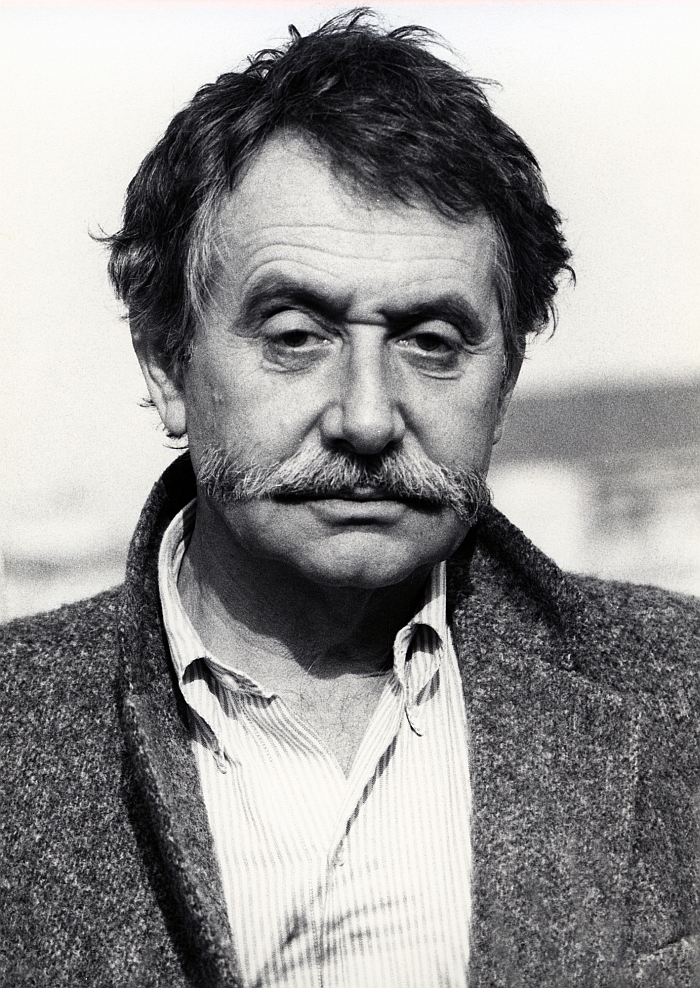
“When I was very small, a little boy of five or six years old, I was certainly no infant prodigy,
